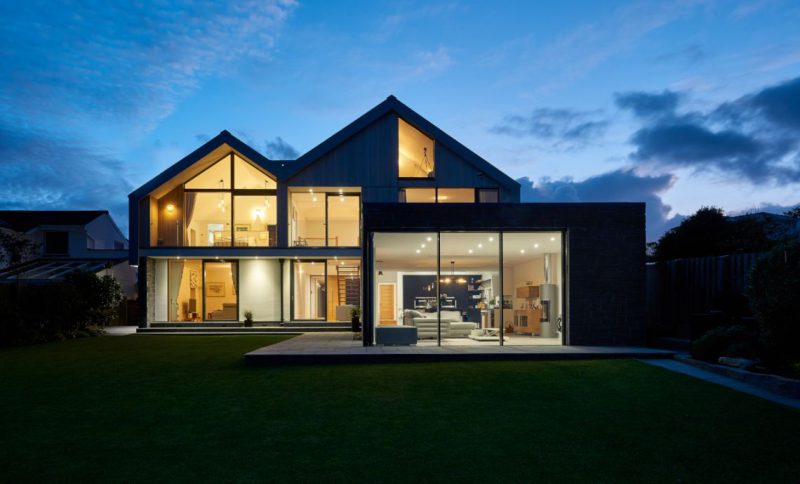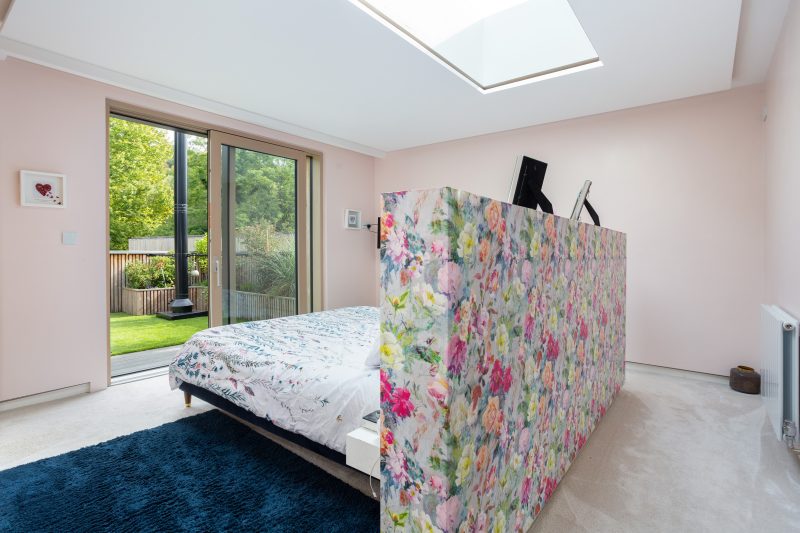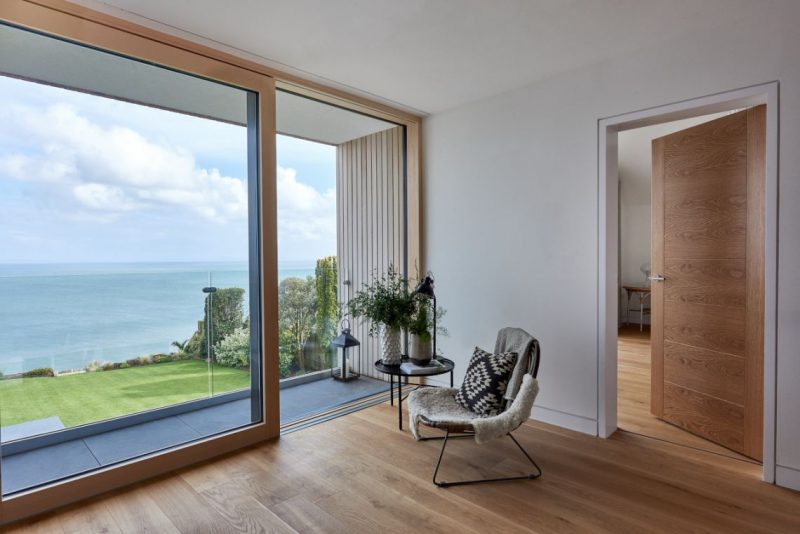How To Build a Sustainable Home
19 October 2023
Sustainability is more than a buzzword in the modern world; it’s a way of life. When it comes to your home, creating a sustainable living space benefits the environment and offers numerous advantages for you and your family.
In this comprehensive guide, our knowledgeable team provides insider expertise on how to create a sustainable home design that’s not only eco-friendly but also comfortable, energy-efficient, and cost-effective. Ready? Let’s get started!

The Sustainable Home Blueprint
Before diving into the details, let’s create a blueprint for building your sustainable home. Below are the top considerations you need to include when constructing your sustainable home design:
1. Sustainable Design
The foundation of a sustainable home lies in its design. Start by working with architects and designers who specialise in sustainable and eco-friendly designs, as they can help you create a home that maximises natural light, airflow, and energy efficiency.
2. Energy Efficiency
Maximising energy efficiency is a cornerstone of sustainability. This includes choosing energy-efficient appliances, LED lighting, and alternative energy sources like solar panels or wind turbines. Additionally, you can increase energy efficiency by properly insulating your home to prevent heat loss.
3. Sustainable Building Materials
Select eco-friendly, non-toxic and renewable building materials. Consider options like reclaimed wood, bamboo, recycled metal, and low VOC (volatile organic compounds) paints to minimise your environmental impact.
4. Water Conservation
Reduce water waste by installing low-flow faucets, dual-flush toilets, and rainwater harvesting systems. Also, consider xeriscaping your outdoor space to minimise water consumption in landscaping.
5. Waste Reduction
Plan for waste reduction by incorporating a recycling centre and composting system into your home, and opt for appliances and materials that are easy to recycle.
6. Healthy Indoor Air Quality
Prioritise indoor air quality by choosing non-toxic materials and installing a robust ventilation system.
Top Tip: Indoor plants can also help purify the air.
These are all vital factors that need to be considered when building a sustainable home, each providing a unique set of ecological and personal advantages.

Sustainable Design and Architecture
Now that we have our sustainability blueprint in place, it’s time to discuss the design and architectural features you can incorporate into your home.
1. Passive Solar Design
Sustainable homes often incorporate passive solar design principles, maximising natural heat and light from the sun to reduce the need for artificial heating and lighting.
2. Compact Design
Smaller, well-planned homes require less energy to heat, cool, and maintain temperatures, also allowing for more efficient use of space.
3. High-Performance Insulation
Quality insulation is a must for maintaining consistent indoor temperatures and reducing energy bills. Consider options like spray foam insulation or structural insulated panels (SIPs).
Energy Efficiency
As mentioned above, energy usage and efficiency are critical to a well-thought-out and sustainable home design. Below, we have outlined some top energy-efficient implementations you can include to improve the sustainability of your home:
1. Solar Power
You can try investing in solar panels to generate your electricity. Not only will you reduce your energy bills, but you can also sell excess energy back to the grid, making it a financially sound choice.
2. High-Efficiency Appliances
How about choosing ENERGY STAR-rated appliances, designed to consume less energy while performing at peak efficiency? As the heading of this section suggests, high-efficiency appliances are implemented to improve efficiency.
3. LED Lighting
Replace incandescent bulbs with LED lighting, which uses significantly less energy, lasts longer, and is available in various colour temperatures to suit your preferences.
4. Smart Home Systems
Think about installing a smart home system that allows you to control your home’s lighting, heating, and cooling remotely. This reduces energy waste when you’re away.
5. Properly Insulated Doors & Windows
Another tried and tested way of improving your home’s energy efficiency is to install properly insulated doors and windows, which will help prevent wasted heat from escaping your home.
At ecoHaus, we provide a wide range of energy-efficient doors and windows, with our team of expert installers helping to ensure valuable heat is trapped in your home in the winter and cool air is contained in the summer. Explore our range of premium doors and energy-efficient windows online now.

Water Conservation
A potentially overlooked sustainability method is water conservation. This practice helps to reduce excess water waste by utilising water-efficient fixtures and technologies, including:
1. Low-Flow Fixtures
Swap out traditional faucets and shower heads with low-flow, high-efficiency fixtures, useful for reducing water usage without sacrificing performance.
2. Rainwater Harvesting
Start collecting rainwater for outdoor use, such as watering your garden or flushing toilets. It’s a sustainable way to minimise water waste.
3. Greywater Recycling
Consider a greywater recycling system, which reuses water from sinks, showers, and laundry for irrigation or toilet flushing.
Sustainable Materials
One of the most obvious factors in creating a truly sustainable home design is to utilise sustainable materials, including recycled materials, renewable resources, and much more:
1. Recycled Materials
Utilise recycled building materials, like reclaimed wood and metal, for flooring, cabinetry, and other architectural elements.
2. Renewable Resources
Choose renewable resources like bamboo for flooring, as it grows rapidly and is a sustainable alternative to hardwood.
3. Low VOC Paints
Use low VOC paints and finishes to minimise indoor air pollution and improve the overall indoor air quality.
There are multiple ways you can implement sustainable materials throughout your home, from choosing reliable and trusted brands when choosing doors and windows, and using a tried and tested building contractor to working with experts in the sustainable building industry to incorporate recycled materials and renewable resources throughout your home’s design.
Waste Reduction
A common feature throughout this guide is the importance of reducing waste wherever possible, which can be extended further into:
1. Recycling Center
Incorporating a dedicated recycling centre in your home makes it easier to separate and recycle materials.
2. Composting
Implement a composting system in your garden to reduce kitchen waste and create nutrient-rich soil for landscaping.

Healthy Indoor Air Quality
A major factor that can improve the quality of life and everyday living for you and your family is to encourage improved indoor air quality by investing in the right features and technologies, such as:
1. Ventilation System
Install a high-quality mechanical ventilation system to ensure fresh air circulation and reduce indoor air pollutants.
2. Window Openings
Implementing high-quality windows provides more opportunities to open up the inside of your home to the outside world, which will allow for sufficient air circulation.
When working with a trusted window supplier and installer like ecoHaus, you will benefit from premium products and an extensive range of capabilities. We have a range of window styles to suit all properties, including a selection of opening types, allowing us to cater to properties of all sizes and implement more openings to improve indoor air quality in your home.
3. Indoor Plants
Bringing indoor plants into your home naturally purifies the air and adds a touch of greenery to your living spaces.
Conclusion
So, there you have it. Developing a sustainable home design is not only a responsible choice for the environment but also a wise investment in your long-term well-being and financial savings. From sustainable design principles and energy efficiency to water conservation, waste reduction, and the use of eco-friendly materials, a sustainable home offers numerous benefits.
It provides a comfortable living environment, lower energy bills, and the satisfaction of knowing you’re doing your part to protect the planet. So, if you’re planning to build your dream home, consider this sustainable route for a brighter, greener future! Contact ecoHaus today to get expert advice for your windows and doors.




